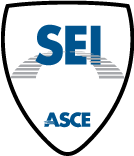As my term as President of the Structural Engineering Institute (SEI) comes to an end on September 30, 2024, I am enthusiastic about the major innovations occurring throughout the structural engineering profession, and the breadth of activities occurring in SEI to drive the profession forward.
SEI leads the way on topics of addressing sustainability and resilience, new technologies in the AEC industry, educational initiatives in structural engineering, creating national design standards for the profession, and other initiatives. In the past year, SEI has held several workshops related to wind engineering and tornado design in conjunction with NIST and other federal organizations to establish a path to enhanced resilience and improved design standards for extreme wind events.
On July 22-24, 2024, SEI led a workshop at Northeastern University in Boston entitled “Towards Zero Carbon: Developing a Roadmap for the Structural Engineering Profession and the Structural Engineering Institute, ASCE.” The workshop provided an opportunity for leaders across diverse fields — from materials experts and design and construction professionals to educators and policy advocates — to brainstorm on priority initiatives that will help drive towards zero carbon in the built environment and help shape the role of the Structural Engineering Institute in leading relevant initiatives. The speaking program was led by Brendan Owens, the Assistant Secretary of Defense for Energy, Installations, and Environment Chief Sustainability Officer within the Department of Defense, who is responsible for sustainability initiatives and design for over 500,000 buildings overseen by the Department of Defense. We also heard from architects, contractors, policy experts, and engineers who highlighted that the industry is poised for major initiatives to address embodied and operational carbon in design, construction, and use of buildings and civil infrastructure. Participants developed a range of ideas that will be published in a report to highlight continued opportunities to address sustainability in the built environment. As workshop co-chairs, Jennifer Goupil, SEI Managing Director, and I will be following up with participants, other volunteers, and other structural engineering organizations internationally to continue to develop tools and strategies, policy initiatives, national standards, and educational opportunities to address this critical topic.
If you are interested in learning more and getting involved with SEI, please join one of our committees, attend our workshops and conferences, and help us lead the way to achieve a more sustainable and resilient future. It is straightforward to apply to be on an SEI committee – we especially encourage people who are newer to the profession to join any of a number of our committees in the SEI Technical or Professional Communities.
In that spirit, please mark your calendar for the 2025 SEI Structures Congress, which will take place April 9-11, 2025 in Phoenix, Arizona. There will be many sessions and committee meetings addressing a wide range of topics in our profession.
I am also pleased to let you know that the SEI Board of Governors recently established two new awards in honor of leaders who made significant contributions to the structural engineering profession:
- The James A. Rossberg Award for Collaboration | ASCE recognizes an individual who has advanced the profession through collaboration with engineering entities and/or professional associations. The award was created in honor of the late Jim Rossberg, the founding Director of the Structural Engineering Institute and a long-time leader and convener within the profession, ASCE, and SEI.
- The David P. Billington Award | ASCE recognizes the excellence, profound public impact, and sustained achievements of a professional who best demonstrates the late David Billington’s legacy as applied to structural engineering education, research, and practice. Professor Billington was a pioneering scholar of Structural Art at Princeton University, a world-renowned educator, and a generous and inspirational mentor. He was a tireless public advocate for structural engineering, its societal relevance, and the importance of its interfaces with other disciplines.
Please consider nominating worthy individuals for these and other SEI awards by November 1.
I would like to close by thanking the SEI Past-President, Don Scott, who will be rotating off the SEI Board of Governors after years of service, including leading our recent SEI reorganization. I would also like to thank Greg Soules, who will be rotating off the SEI Board of Governors and has been an outstanding contributor during his term on the Board. Greg also served as the inaugural leader of the SEI Technical Community Executive Committee, a key role during the reorganization of SEI. Finally, I would like to thank the SEI Board of Governors, the SEI Community Executive Committees, the SEI committee chairs and members, and the many other SEI volunteers with whom I have interacted during my term as President. I would especially like to thank Jennifer Goupil and the entire SEI staff for their critical contributions to our profession and our institute. Jennifer’s leadership of the Institute and her work on resilience within ASCE remain a hallmark of excellence within the profession
Congratulations and best wishes to incoming President Stephanie Slocum, the first woman President in the history of SEI! Stephanie has outstanding vision for the profession and Institute, and we look forward to her leadership during this pivotal time for structural engineering.
Jerome F. Hajjar, Ph.D., P.E., NAE, F.SEI, F.ASCE
SEI President


